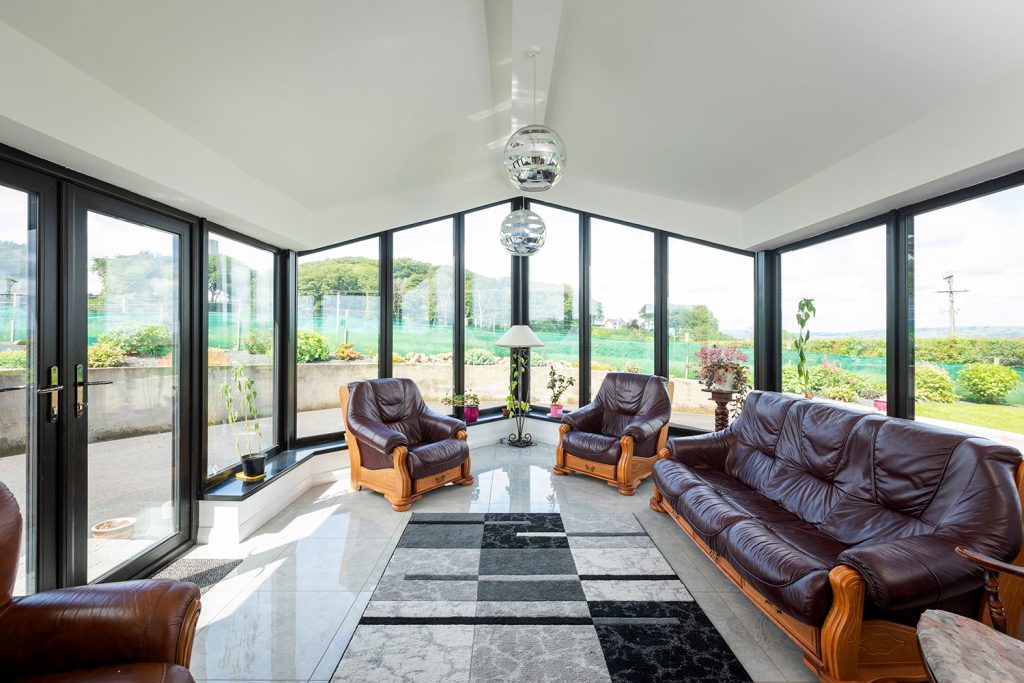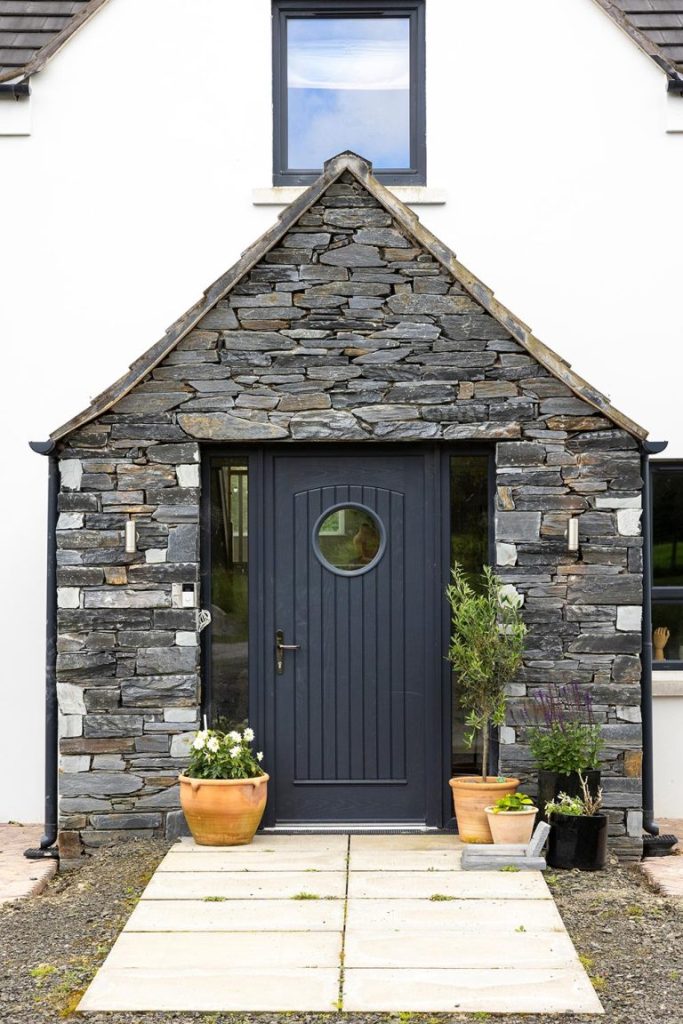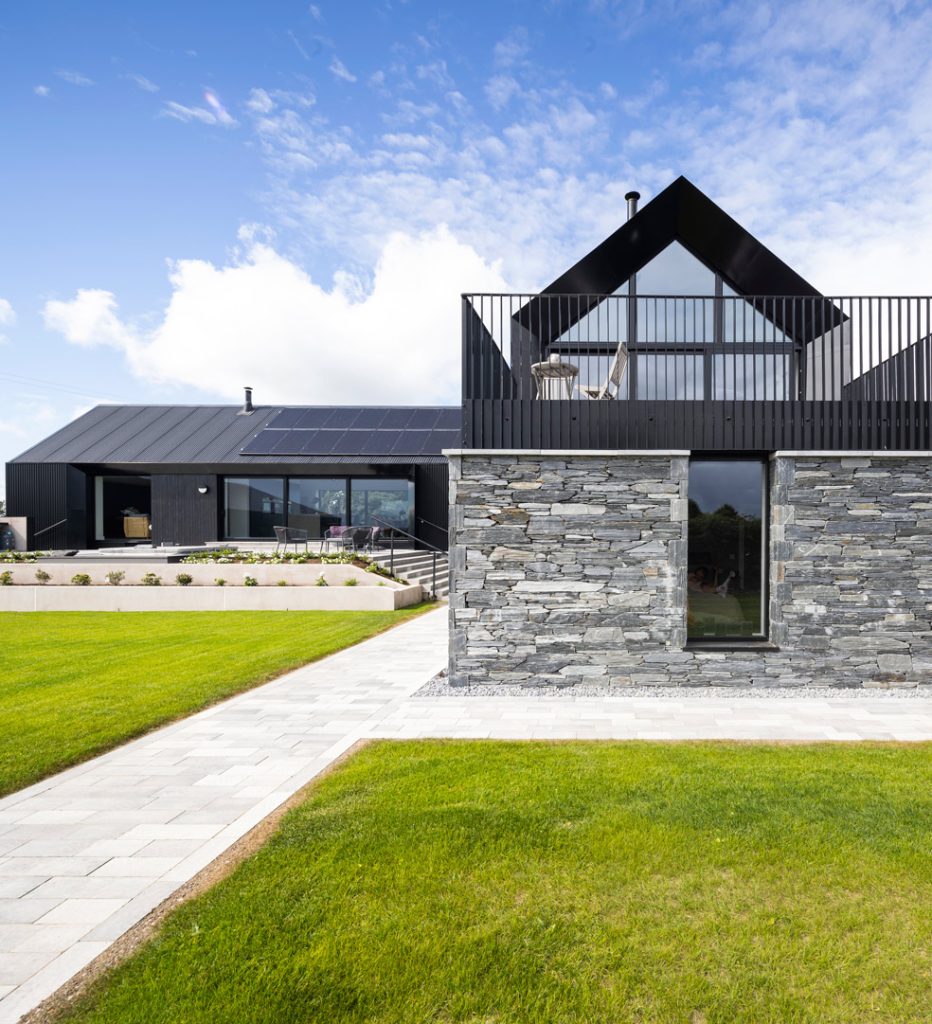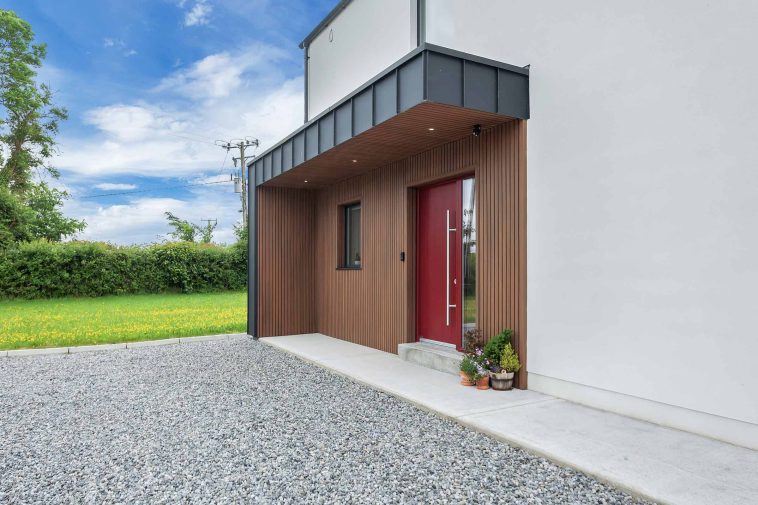A whistlestop tour of choosing windows and doors including what’s on offer in Ireland today and how to match them with your roof and external wall coverings.
In this article we cover:
- Importance of windows and doors in design
- Framing options
- Double vs triple glazed
- Lift and slide or bifold
- When to buy secondhand
- External door choices
- Window dressings
- External wall finishes
- Roof finishes
The design stage is when to decide how many windows you need, and of what size. You’ll have to consider the light, views and wow factor, and balance all of that with cost, energy efficiency and maintenance requirements (window cleaning can become a headache).
Your architect is likely to pull you in the direction of the more glazing the better, but a high performing window is four times less energy efficient than an insulated wall. This means that heat escapes in winter but also that in the summer, you’re likely to suffer from overheating.

The way to get around this is to design the house so that the glazing-to-wall ratio is right and consider orientation, or which way the house faces. The passive house institute’s software PHPP is especially helpful in this regard.
Pain points for costs are how much uninterrupted glazing you need for your views. The larger the pane of glass the more expensive it will be. Fixed panes are cheaper to install and are more energy efficient, so consider their use in the overall design to soften the blow.
Self-builders, who tend to go high spec, can easily spend 10k+ on their windows; it all depends on house size, design and choices you make. When selecting windows you’re likely to ask yourself the following:
Aluminimum or uPVC
Aluminium is the most expensive finish and tends to be used for large expanses of glass, costing in excess of €/£850 per sqm. uPVC is the most cost effective (in the region of €/£300-350 per sqm), but high quality uPVC won’t be much cheaper than aluclad (in the region of €/£600-800 per sqm). Aluclad refers to the external side of the frame being clad in aluminium; the frame can either be timber or uPVC. Aluclad uPVC is more cost effective than aluclad timber windows, the latter being the most common.
Triple or double glazed
The debate rages on whether the extra cost for triple is worth it, which can be up to 30 per cent although many suppliers say costs are comparable. Some argue the three panes of glass is now the standard for new builds, others say triple glazing is only necessary for sound proofing. This can be worked out when you carry out the energy assessment.

Lift and slide or bifold
Most homes nowadays have a wall of glazing that doubles up as a door to get to the patio. The two mechanisms are lift and slide, which allow the pane of glass to slide along a channel or bifold, which involves hinges along the windowpanes. For these large expanses of glass, aluclad is the most common option (uPVC is more limited on pane sizes). For the largest sizes and for bifold, the framing is often aluminium which pushes up the price further.
Secondhand or new
Smaller builds such as tiny houses tend to look for secondhand windows and design around them – that’s all fine as long as you’re sure of provenance and that they’re not damaged. This can represent a big saving.
External doors
As with windows, aesthetics will be important here. Wood and uPVC doors are no longer common as more energy efficient composite doors dominate the market, with costs starting from roughly £/€1k. Composite doors are engineered using a range of materials such as wood, insulating foam and GRP (glass reinforced plastic).

Window Dressing
When it gets dark outside, you’ll need some form of dressing to make the room comfortable. Blinds and curtains are expensive, because it’s likely they too will be made to measure.
Consider whether the largest window openings will require dressing, (they might not if the area is not used at night), and make provisions for those that will (e.g. concealed fixings at first fix).
External Finishes
Walls
The external finish of your walls will depend on the build method. For blockwork, a sand/ cement render is the most cost effective option (starting from around €/£30/sqm); there are also silicone based screeds that offer greater weather protection. Blockwork can also be clad in sheets of timber or stone. Insulating concrete formwork (ICF) will require an acrylic render finish, or can be clad (this requires a damp proof membrane). This must be worked out in advance to anticipate if any fixings will be required. For timber frame, many self-builders will build a block wall tied into the timber frame to then screed as normal. You can also go with cladding, or screed onto a cement board. Other building methods will offer similar options.
Roofs
Flat roofs generally cost less to build than pitched roofs, as much as 20 to 30 per cent less. Then for the roof coverings you can expect to pay from £/€20 per sqm to more than ten times that amount for high end finishes. From least costly to most costly, your roof covering options range from concrete tiles, clay tiles, fibre cement slates, natural sales and metal coverings such as zinc. You’ll also need to consider any valleys or leadwork that might be required as this is also likely to have a visual impact, and cost.








